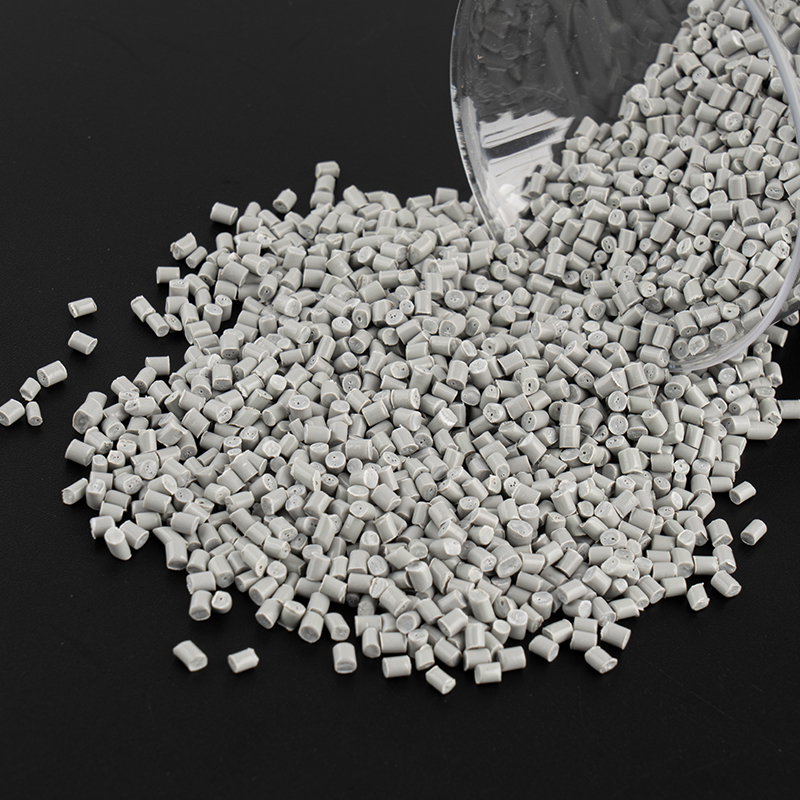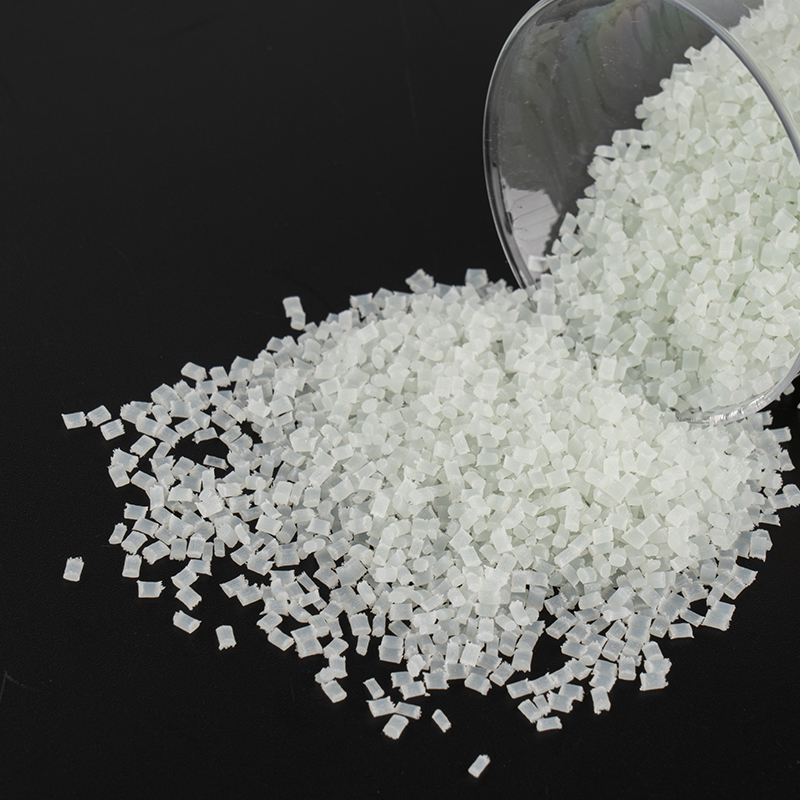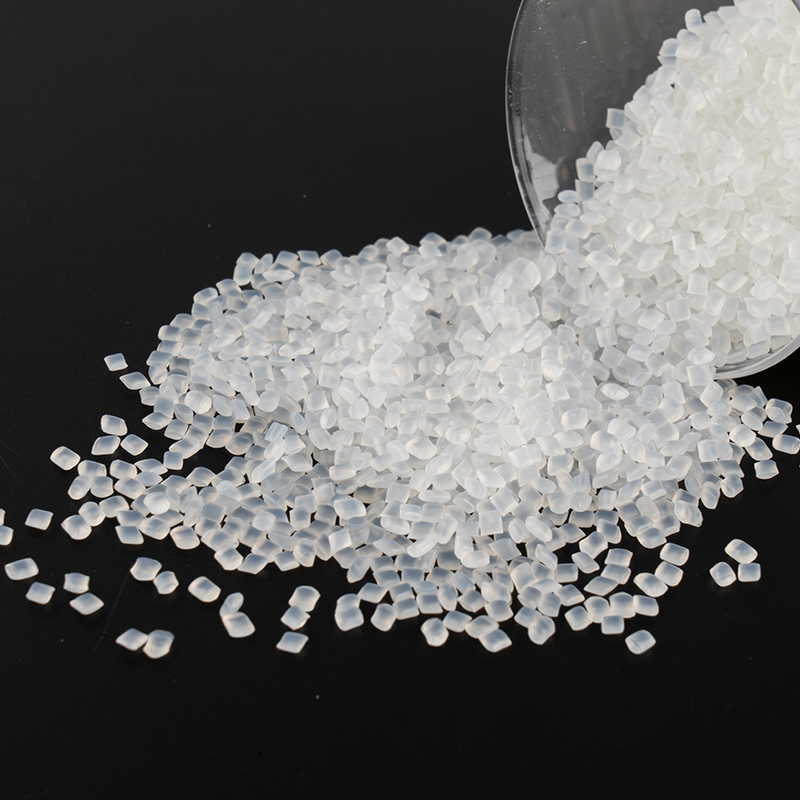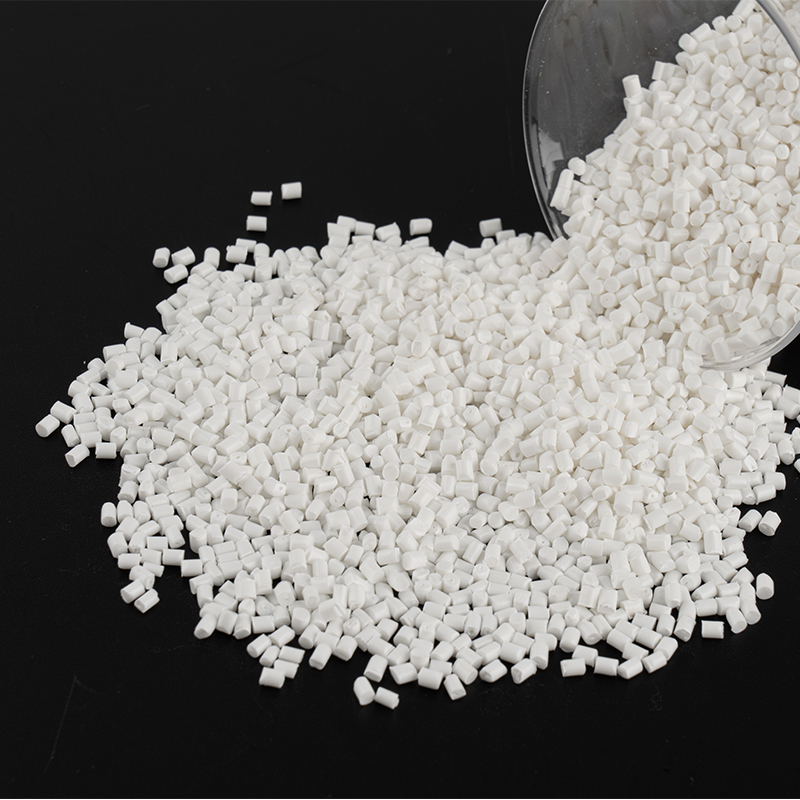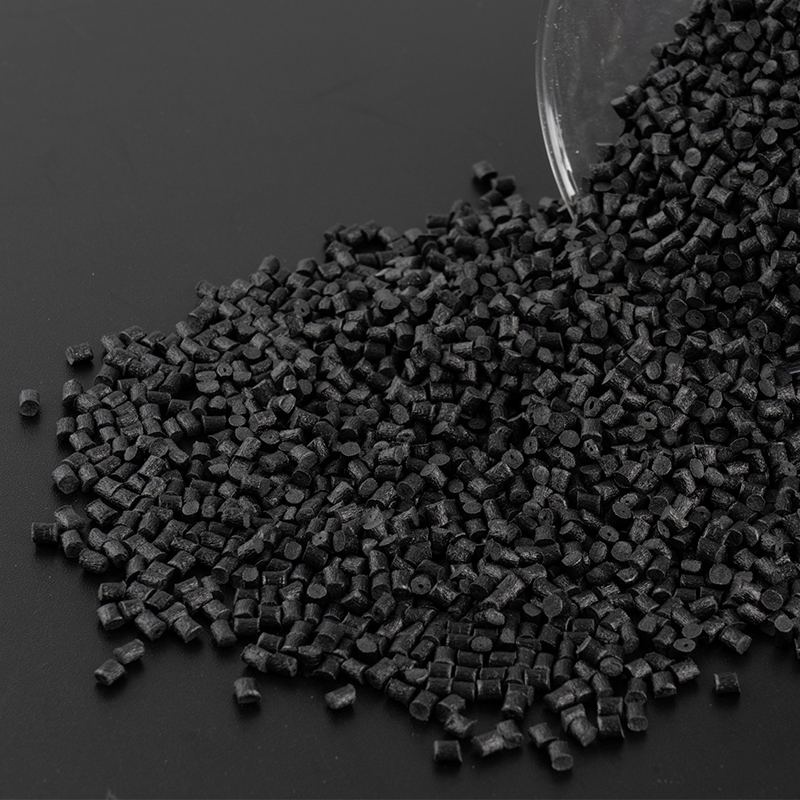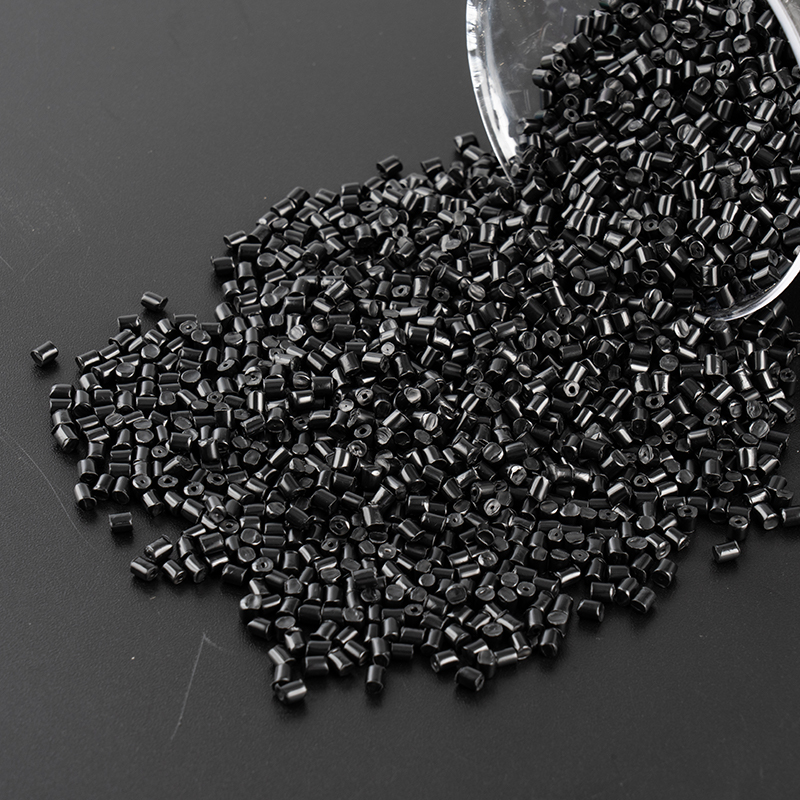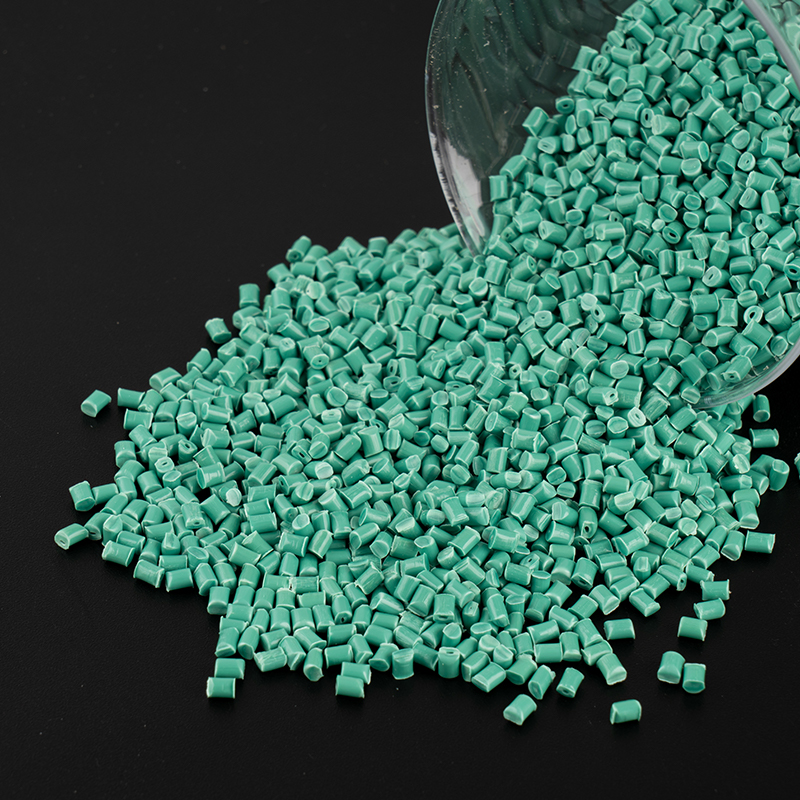1. Raw material ratio and modifier type
PA66, as a base material, has good wear resistance and strength, but in order to meet different application requirements, various modifiers are often added to adjust the performance.
Glass fiber (GF) reinforcement: Glass fiber is the most common reinforcement material, which can greatly improve the tensile strength and rigidity of PA66 Modified Engineering Plastics. Usually the glass fiber content is between 10%-40%. The higher the content, the stronger the strength and rigidity, but too high will lead to increased brittleness of the material and increased processing difficulty.
Mineral fillers: such as talcum powder, calcium carbonate, etc., are mainly used to improve dimensional stability and reduce costs, while also improving rigidity and hardness.
Tougheners: In order to improve impact strength and impact resistance, tougheners such as elastomers or rubber particles are added. They prevent the material from brittle cracking by absorbing impact energy.
Lubricants and antioxidants: Improve processing performance, prevent thermal degradation, and improve product quality.
The reasonable ratio of modifier types and proportions is the primary factor determining the comprehensive mechanical properties of PA66 modified materials.
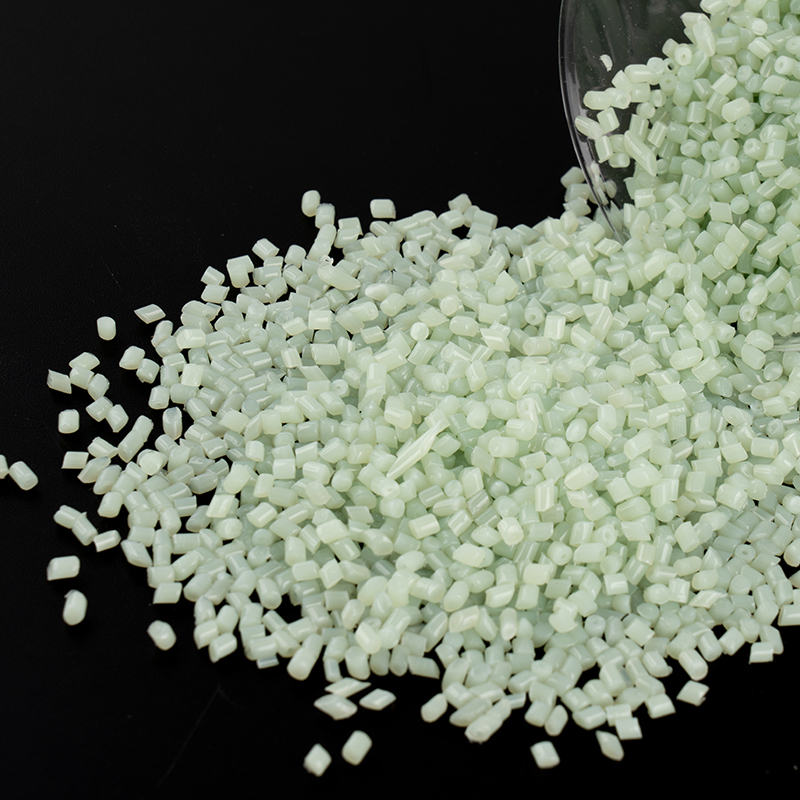
2. Processing parameters
The processing technology has a direct impact on the mechanical properties of the material, especially the injection molding and extrusion processes.
Injection temperature: PA66 has a high melting point, and the injection temperature is usually between 260-280°C. Too low temperature will lead to uneven melting, more defects, and affect mechanical properties; too high temperature may cause thermal degradation, molecular chain breakage, and reduce strength.
Injection pressure: Sufficient pressure ensures that the mold is full, reduces pores and defects, and thus improves the density and mechanical strength of the material.
Cooling rate: The cooling rate determines the crystallization behavior of the material. Rapid cooling may lead to an increase in amorphous areas, making the material flexible but reducing strength; slow cooling is conducive to crystal formation, improving rigidity and heat resistance.
Screw speed and shear force: Too high screw speed during processing will produce greater shear force, resulting in excessive shear and degradation of the material, affecting molecular weight and mechanical properties; too low screw speed will result in insufficient melting, affecting filling and performance.
Optimizing processing parameters can maximize the performance advantages of the material.
3. Crystallinity and microstructure
The crystallinity of PA66 modified plastics is one of the core indicators of mechanical properties. The higher the crystallinity, the better the strength, hardness and heat resistance of the material.
Formation of crystallinity: During the cooling process, the molecular chains are arranged to form regular crystals. PA66 has a high crystallization temperature, and proper cooling and annealing can improve the crystallinity.
Grain size and distribution: Uniform and fine grain structure can balance stress distribution, improve toughness and strength; large grains or uneven grains will cause the material to be fragile.
Crystallinity detection method: Differential scanning calorimeter (DSC) and other instruments are commonly used to detect crystallinity, which is convenient for R&D personnel to control the process.
Adjusting crystallinity is an important way to improve the mechanical properties of PA66.
4. Environmental factors
The temperature, humidity and light in the use environment have a significant impact on the mechanical properties of PA66 modified engineering plastics.
Temperature influence: High temperature environment will soften PA66, reduce the elastic modulus and strength of the material, and reduce the service life; low temperature may lead to increased brittleness.
Humidity absorption: PA66 is hygroscopic. After absorbing water, it will cause the hydrogen bonds between molecules to break, reduce tensile strength and rigidity, and affect dimensional stability. Moisture absorption may also cause the material to swell and deform.
UV aging: Long-term exposure to ultraviolet rays will cause photooxidation on the surface of the material, resulting in color changes, surface cracking and performance degradation.
Therefore, when designing and selecting materials, the specific use environment should be considered and necessary protective measures should be taken.
5. Dispersibility of additives and fillers
The uniform dispersion of modifiers is crucial to the performance of materials.
Good dispersion: Ensure that the glass fiber or filler is evenly distributed in the matrix, improve the interface bonding force, and thus enhance the overall mechanical properties.
Interface bonding: The use of interface compatibilizers or coupling agents can improve the bonding force between the filler and the PA66 matrix, avoiding stress concentration and early fracture.
The hazards of agglomeration: If the filler agglomerates, it will not only affect the appearance, but also become a stress concentration point, resulting in brittle fracture and performance degradation of the material.
The control of the dispersion of the modifier is the focus of processing technology.






